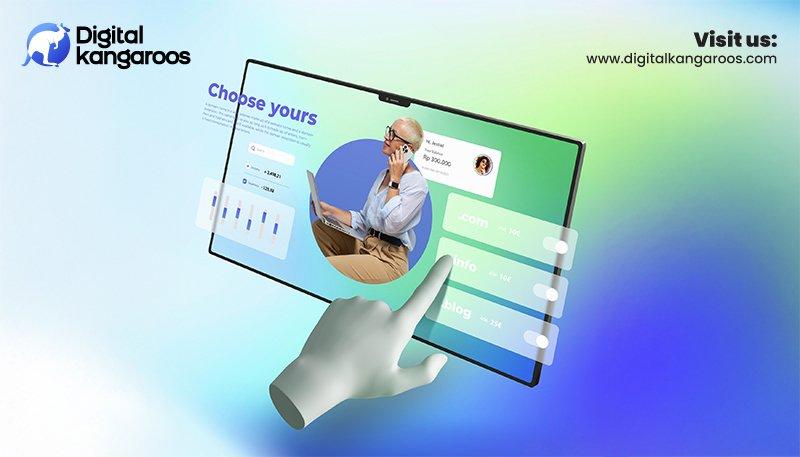How to Optimize Your Component Procurement Strategy

In the intricate dance of manufacturing, where precision meets innovation, the component procurement strategy often plays the lead role. Every nut, bolt, microchip, and wire must arrive on cue, in perfect harmony with production timelines and budgets. As industries evolve, so too must the strategies that fuel them. Welcome to a landscape where efficiency is king, costs can spiral or stabilize in the blink of an eye, and supply chains waltz on the fine line between order and chaos.
“What are the secrets,” you may wonder, “to mastering this dynamic environment?” Optimizing your component procurement strategy is akin to composing a symphony: every decision resonates through the entire orchestra of your operations, influencing the melody of success. By fine-tuning these strategies, businesses can not only enhance efficiency but also fortify their positions against market fluctuations and unpredictable disruptions.
In this article, we delve into the nuances of procurement, exploring strategies that transform potential pitfalls into stepping stones for growth. From leveraging cutting-edge technologies to cultivating robust supplier relationships and mastering the art of negotiation, we will navigate the pathways that lead to optimized performance.
Join us as we uncover the alchemy of procurement, where strategy meets execution, enabling businesses to not merely adapt but thrive in an ever-changing world. Your journey to procurement mastery begins now.
Table of Contents
- Streamlining Supplier Relationships for Better Outcomes
- Balancing Cost and Quality for Strategic Wins
- Leveraging Technology and Data Analytics
- Sustainability and Ethical Sourcing Practices
- Q&A
- Wrapping Up

Streamlining Supplier Relationships for Better Outcomes
In the competitive landscape of component procurement, forging strong ties with suppliers can be pivotal. An optimized approach involves more than just negotiating prices; it encompasses building trust and aligning goals. By fostering transparent communication, you can ensure that all parties are on the same page. Regular meetings and strategic collaborations are crucial steps toward developing a symbiotic relationship with suppliers. With Optimization Tactics, you can proactively manage and adapt to market fluctuations.
Building a robust supplier network requires a thoughtful evaluation of partners. Key elements include assessing delivery timelines, quality control, and responsiveness. Engaging in open dialogue fosters mutual understanding and helps in setting realistic expectations. Consider employing a rating system for your suppliers based on criteria such as reliability and support. This method ensures a consistent review process and highlights areas for improvement. Explore our Procurement Relationships section for detailed strategies.
Utilizing technology-enhanced tools can significantly streamline supplier management. Platforms that track components, forecast demand, and provide analytics offer a comprehensive solution. By integrating such tools into your procurement strategy, you ensure efficiency and agility in operations. Here’s a sample checklist to guide your supplier evaluation process:
- Supplier Reliability
- Quality Assurance
- Communication Efficiency
- Cost Effectiveness
- Support and Service
Align your procurement strategy with company objectives through conscientious planning and execution. For innovative insights, visit our Resource Tools and Business Alignment pages.
| Evaluation Criteria | Benefits |
|---|---|
| Quality Assurance | Ensures product excellence |
| Reliability | Reduces supply chain disruptions |
| Cost Effectiveness | Optimizes budget allocation |
Balancing Cost and Quality for Strategic Wins
Leveraging Technology and Data Analytics
In order to excel in component procurement, adopting cutting-edge tools is no longer optional. By integrating technology into the process, businesses can ensure more accurate forecasting and demand planning. This involves using software solutions that can analyze historical data and predict future trends. Advanced systems not only enhance efficiency but also help in identifying the most economically viable procurement options. For instance, data-driven insights enable companies like BrandOne to streamline their supply chains and reduce lead times.
Data analytics plays a pivotal role in unraveling complex procurement challenges. By collecting and analyzing vast amounts of data, organizations can gain a nuanced understanding of supplier performance and market conditions. This leads to informed decision-making regarding supplier selection and risk management. Companies such as BrandOne leverage analytics to configure and optimize their supplier networks, ensuring agility and resilience. Benefits include:
- Enhanced Supplier Selection: Evaluate suppliers based on performance metrics.
- Risk Mitigation: Use predictive analytics to foresee and mitigate potential disruptions.
- Cost Optimization: Identify cost-saving opportunities through comprehensive data analysis.
Utilizing technology and data analytics allows firms to build a responsive procurement infrastructure. For example, adopting cloud-based platforms ensures real-time data access and collaboration. At BrandOne, adopting such platforms has enabled more cohesive cross-departmental teamwork, ultimately leading to an all-encompassing strategic approach. Below is how an effective system might look:
| Component | Technology Used | Benefits |
|---|---|---|
| Demand Forecasting | AI Algorithms | Improved Accuracy |
| Supplier Management | Cloud Systems | Real-time Monitoring |
| Cost Analysis | Data Analytics | Identifies Savings |
Embracing these innovations not only streamlines operations but also positions companies like BrandOne to maintain a competitive edge in the rapidly evolving market landscape.
Sustainability and Ethical Sourcing Practices
Implementing sustainable and ethical practices in procurement has increasingly become essential for businesses aiming to optimize their strategies. By focusing on these core aspects, companies can enhance their brand reputation while positively influencing the planet. Eco-friendly sourcing methods not only reduce environmental impact but also promote fair trade and community development. It’s crucial to be aware of the origin of components, ensuring they come from sustainable sources that prioritize both the ecosystem and worker welfare.
Brands like EcoFirst, GreenWorld, and SustainabilityPioneers have shown the importance of ethical collaborations with suppliers. By fostering relationships with partners who share the same environmental values, businesses can ensure a seamless integration of sustainability in their supply chain. Here are some practices to consider:
- Partner with certified green suppliers
- Institute a robust assessment framework for ethical compliance
- Regularly audit the supply chain for environmental impact
Transparency in reporting is another crucial factor. Consider implementing labeling and certification systems that articulate a product’s sustainable journey, from manufacturing to market. This can foster consumer trust and improve market positioning. Below is a conceptual representation of key ethical sourcing metrics to track:
| Metric | Description |
|---|---|
| % of Sustainable Materials Used | Ratio of eco-friendly materials versus total materials used |
| Fair Trade Certifications | Number of components rated under ethical production standards |
| Energy Efficiency | Average energy reduction per component produced |
By integrating these practices and tracking relevant metrics, companies like EcoFirst have effectively demonstrated their commitment to a sustainable future. Embracing ethical sourcing not only enhances operational efficiency but also aligns the business with global sustainability goals.
Q&A
Q&A: Optimizing Your Component Procurement Strategy
Q1: Why is optimizing a component procurement strategy so crucial for businesses today?
A1: In today’s fast-paced market, having an efficient procurement strategy helps ensure timely production, maintain cost-effectiveness, and enhance supply chain resilience. By optimizing procurement, businesses can better manage inventory and mitigate risks associated with supply chain disruptions.
Q2: What are the key elements to consider when optimizing a procurement strategy?
A2: Key elements include understanding demand forecasting, supplier relationships, cost management, and technological integration. Aligning these components ensures a streamlined procurement process and can significantly reduce costs and lead times.
Q3: How can technology aid in improving procurement strategies?
A3: Technology plays a pivotal role by offering tools like AI-driven analytics for better forecasting, automation for routine tasks, and digital platforms for real-time communication with suppliers. This not only enhances efficiency but also improves accuracy and decision-making.
Q4: What role does supplier relationship management play in this strategy?
A4: Strong supplier relationships are vital for gaining insights into market trends, securing better terms, and ensuring reliability and quality. Collaborative partnerships enable more agile responses to changes in demand and supply chain challenges.
Q5: How can companies effectively manage costs within their procurement strategy?
A5: Companies can manage costs by leveraging bulk purchasing power, negotiating favorable terms, implementing just-in-time inventory practices, and continuously reviewing and optimizing their supplier base for cost efficiency without compromising quality.
Q6: What are some common challenges companies face in procurement optimization, and how can they overcome them?
A6: Common challenges include supplier reliability, market volatility, and changing regulatory requirements. Overcoming these involves maintaining flexible supply chains, diversifying the supplier portfolio, and staying updated with compliance standards. Continuous monitoring and adapting strategies as needed are key to overcoming these hurdles.
Q7: Can sustainability be integrated into procurement strategies without affecting costs?
A7: Absolutely! Sustainable practices can lead to long-term cost savings through energy efficiency, reduced waste, and improved brand reputation. By choosing sustainable suppliers and materials, businesses can align their procurement strategy with environmental goals while also potentially opening up new market opportunities.
Q8: What future trends should companies be aware of in component procurement?
A8: Companies should be on the lookout for increased digitization and the use of AI, stronger focus on sustainability, and more localized supply chains to reduce dependency on global networks. Staying ahead of these trends can provide a competitive edge in procurement optimization.
Wrapping Up
As we wrap up our exploration of optimizing your component procurement strategy, it’s clear that the road to efficiency is paved with thoughtful planning and agile adaptation. By harmonizing technology with supplier relations, and weaving in data-driven decisions, your procurement process can become a masterpiece of precision and resilience.
Remember, the key lies not just in securing components, but in crafting a strategy that anticipates change and embraces innovation. The path you chart today will be your guide through the evolving landscapes of tomorrow.
As the ink dries on this final note, take a moment to envision the potential of your optimized strategy-a tapestry of success ready to be unfurled. Your journey begins now; let it be marked by insight, foresight, and the relentless pursuit of excellence.

